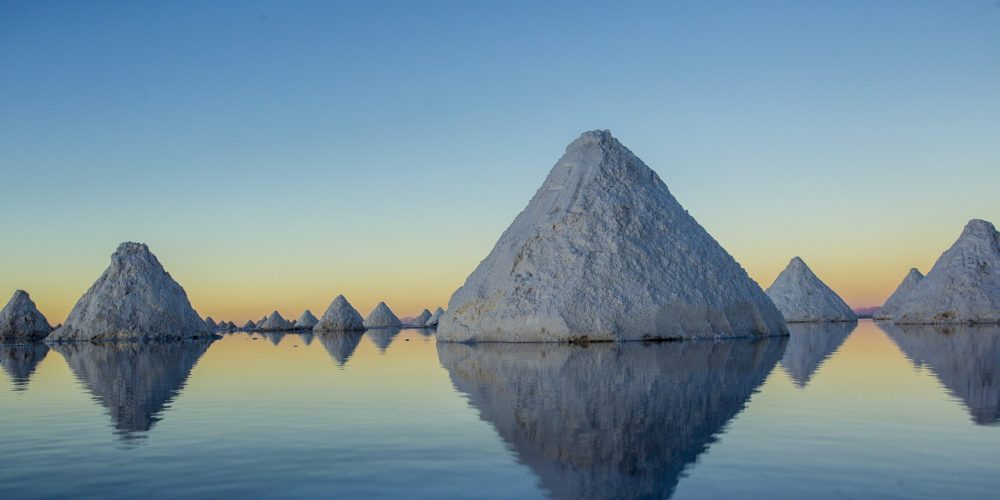No electromobility without lithium
Due to the ever-growing battery sector, the demand for lithium has surged over the last years. In 2016, battery grade lithium accounted for about 35% percent of the lithium demand and soared to almost the double quantity of 65% of demand in 2019. Besides batteries, lithium is also used in ceramics and glass, lubricating greases, air treatment, casting and polymers (see figure below).
Mining / Production
Lithium is being produced from minerals or brines. The exploitation from minerals is relatively quick process, taking only a few days to produce high purity lithium. However, mineral exploitation is costly, requires energy, chemicals and water and produces waste. Most lithium from minerals is produced in Australia which makes up about half of the global production.
Argentina and Chile, which are together another big player, produce lithium from brines. Brine processing is relatively cheap, but takes several months to years to get the desired quality. Exploitable salt lake brines occur on the surface but also in underground salines, mainly in the “Lithium Triangle” in South America, at the border of Argentina, Chile and Bolivia in an average elevation of around 3700m. A further large brine deposit is situated in China and smaller ones in the United States and Northern Africa (Flexer et al. 2018). In simple terms, brines are pumped from saline aquifers, an underground layer of water-bearing permeable rock, from about 50 – 300m depth to the surface. There the brines are routed in smaller evaporation ponds and precipitated with water and possible chemicals to achieve the desired concentrate quality for further processing in the lithium carbonate plants.
Issues
About 60-70% of fresh water in the region where lithium is mined from salt lake brines is used by the brine operations – in a region where water is supplied by the scarce groundwater which occur from the sparse rainfall in the adjacent mountainous regions. Moreover, recent research on lithium mining in the Atacama Salt Flat (ASF) shows that additional impacts including reduced vegetation and increased daytime land surface temperature in the ASF can be directly related to lithium production (Liu et al. 2019). Furthermore, reduced groundwater levels, salinization and soil degradation add to environmental stress, as well as the spread of poisonous heavy metal dusts.
As presently still large lithium primary reserves are available, lithium recycling has not been addressed yet on industrial scale. Even though batteries are being recycled today already, the objective is mainly to recover cobalt and nickel. The processes and technical know-how to recover Lithium are available, however, so that recycling – if there are incentives to implement it – may become a source of supply in the future.
adapted from Dr. Volker Zepf
Sources: Flexer V., Baspineiro C. F., Galli C. I. (2018): Lithium recovery from brines: A vital raw material for green energies with a potential environmental impact in its mining and processing.
Liu W., Agusdinata D. B., Myint S. W. (2019): Spatiotemporal patterns of lithium mining and environmental degradation in the Atacama Salt Flat, Chile.
Martin G., Rentsch L., Höck M., Bertau M. (2017): Lithium market research – global supply, future demand and price development.
SQM (2017): Sociedad Química y Minera de Chile S.A. Annual Report 2017.
SQM (2018). Sociedad Química y Minera de Chile S.A. Annual Report 2018.
Sun X., Zhao F., Liu Z., Hao H. (2017): Tracing global lithium flow: A trade-linked material flow analysis. USGS. Mineral Commodity Summaries 2018, 2019, 2020. Lithium.
Vikstroem H., Davidsson S., Hoeoek M. (2013): Lithium availability and future production outlooks.
